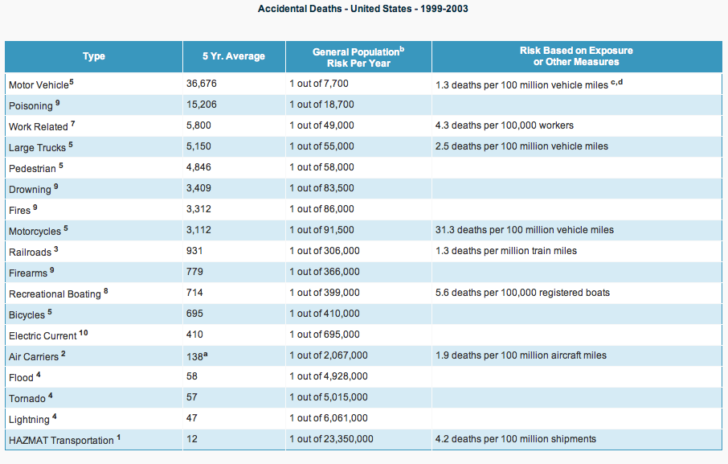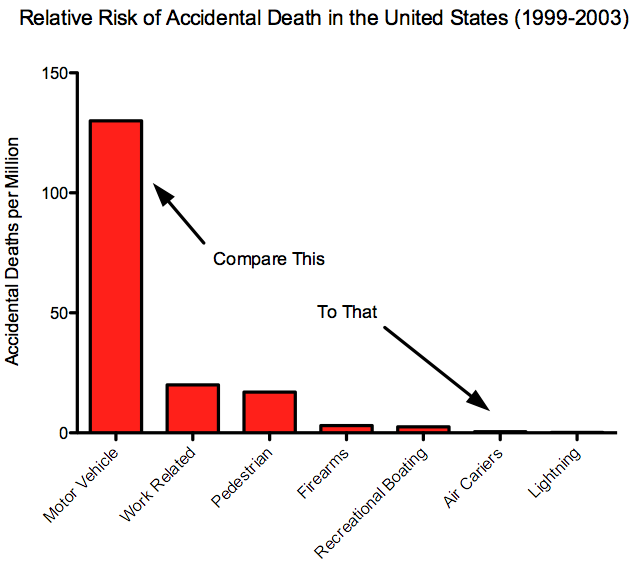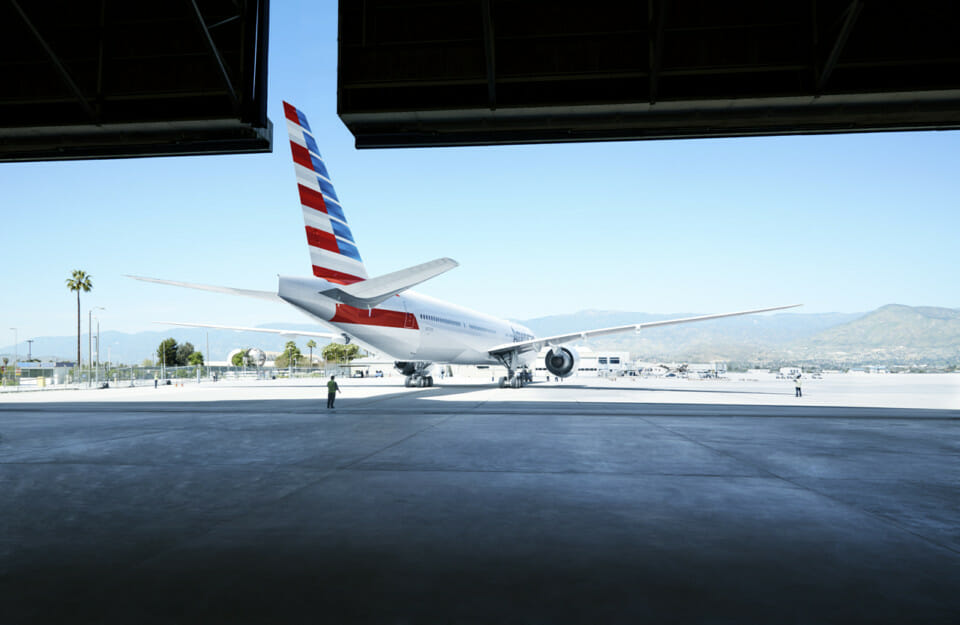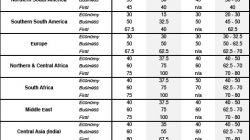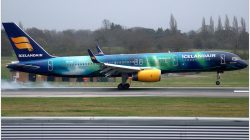This is going to be a slightly different Devil’s Advocate post. Normally this series debates the Conventional Wisdom of the miles and points community and how it relates to loyalty and credit card programs. But since air safety is a regular topic in the media, even more so over the last weeks and months since the disappearance of Malaysia Flight 370, it’s something that’s been on my mind recently. So I want to talk about some Conventional Wisdom on air travel safety that’s held not only by this community, but by the broader world as well. (Don’t worry, I promise we’ll get back to miles and points next week.)
It’s not unusual that we hear about near-misses and seemingly dramatic events in the sky. Just in the last week, there’s a report from the NTSB that two planes came within yards of each other last month at Newark Airport and a long overdramatic recounting of an avoidance maneuver by a United 757 over the Pacific (which I think Lucky at “One Mile at a Time” did a very nice job of dissecting). However, the vast majority of the time no one is injured or killed in these episodes, and in fact worldwide there’s literally dozens of incidents every week which are never widely reported. Only a truly shocking event like Malaysia Flight 370 gets our full attention, and deservedly so, because commercial air travel has become such an incredibly safe form of transportation that only the rare major incident has become news.
(Why are other events not reported? The cynic might say it’s because of selective bias. A near-miss between two jetliners is only of moderate interest. When it happens shortly after a mysterious disappearance, it is part of an ongoing story and blown out of proportion in a way that suggests we’re all at serious risk. An opportunity for ratings and ad dollars may be more to blame than any actual decrease in air safety.)
Conventional Wisdom tells us the lack of news — most of the time — is partially thanks to pouring billions of dollars and millions more man-hours into air safety, and it’s certainly true that at one time commercial air transportation was nowhere near as impressive as it is today. But now are we near or at the limits as to what we can accomplish?
How much safer can we really make airline travel, and is it worth it?
According to The New York Times, 2012 was the safest year for airline travel since 1945, and at the time there had not been a fatal accident involving a commercial flight in the United States in over 4 years. That record was marred the next year by the crash landing of Asiana Flight 214 in San Francisco, and yet in 2013 air travel set another record for safety. Obviously we’re doing something right, and one might argue the old adage “if it ain’t broke, don’t fix it” applies here.
But let’s take another look at some statistics from the U.S. Department of Transportation, specifically the accidental death risk in relation to other forms of transportation…
This data is somewhat old, but it’ll serve to make this point: as of 2003, the risk of dying in a motor vehicle accident was 268 times greater than dying in an air carrier accident. With the improvements in air safety over the last decade, it’s safe to assume the current risk ratios are equal to or greater than that today. And it’s not just cars, either. You have a greater risk of accidental death from going to work, walking down the street, or taking your boat out on the weekend.
In case you find it difficult to grasp these odds (what does 1 in 2,067,000 look like?), Scott created a chart that uses the same numbers as above but reinterprets them as the number of accidental deaths in a population of 1,000,000 people. So if the risk is 1 in 200,000, then the estimate is there would be 5 accidental deaths among 1 million individuals.
If motor vehicles are so much more dangerous, are we trying to narrow the gap by spending 268 times as much money on auto safety as we do on air safety?
You can already guess the answer to that question — not even close. In March, Businessweek discussed the costs of air safety versus spending the same money in other areas. While the article is written from their typical pro-business “all regulations are bad” viewpoint, the statistics are worth considering. Is it really worth $100,000 per life-year saved to carry automated external defibrillators on all inbound U.S. flights versus spending $7 per life-year for vaccination programs? Or even $7,000 per life-year for auto vehicle air bags?
All lives are valuable. We like to think that we can’t assign them a price. But the fact is we only have so much money as a society to spend addressing these and other issues and need some way to set priorities. At the same time, dollars not spent on air safety won’t necessarily make it directly to other safety areas that may need it more.
But why have we spent so much effort on flight safety in the first place? How did we get to the point where we’re 5 times more likely to die on the drive to the airport than on the flight itself? A few years back David Ropeik wrote a terrific article for NOVA about the perceived risks of flying in which he talked extensively about how fear factors into risk perception. Giving up our sense of control while flying, seeing coverage of crashes in the news, even our oversensitivity to catastrophic risks and dread of a nasty death via a plane crash all contribute to our desire to overspend resources on air safety. These emotional factors have driven us to make illogical choices even when the numbers show that we could make our lives safer overall by redirecting those resources elsewhere.
The Devil’s Advocate says we need to re-examine how we spend to improve safety.
Going back to that New York Times article about safety in 2012, it’s interesting to note that one of the main reasons discussed for the vast increase in commercial air safety isn’t directly related to money. Rather, the fact that “regulators, pilots and airlines now share much more extensive information about flying hazards, with the goal of preventing accidents rather than just reacting to them” has helped make a dramatic difference without a huge price tag. That’s smart money being spent, not just an impressive dollar amount.
Obviously any discussion of an industry as highly regulated as the airlines will always bring out competing ideologies on the role of government in business and safety. But put aside whatever political leanings you may have for the moment and just consider the fact that as a society we will always have infinite demands competing for limited resources. Unfortunately the ideal is always somewhat distorted by execution in reality, but don’t we want to at least attempt to put the greatest effort and focus towards areas that will get us the greatest return?
Yes, airline travel could be even safer than it is today. But so could cars, or railroads, or bicycling, all of which carry many more people on a daily basis than airplanes. When the risk of injury or death has become so infinitesimal in one area as to be practically meaningless, wouldn’t we be better served by considering our mission accomplished and refocus on maintaining our advantage there while looking ahead for the next challenge elsewhere?
If you’d like to debate the Devil’s Advocate about refocusing spending away from air safety, please share your thoughts below in the comments. Or if you’re a miles and points fanatic more interested in a discussion along those lines, take a look at last week’s post about the value that can be found spending miles on the dreaded “higher-level” standard award redemption (see “Respect the Unloved Standard Award Redemption“). As always, thanks for participating in the discussion!
Devil’s Advocate is a weekly series that deliberately argues a contrarian view on travel and loyalty programs. Sometimes the Devil’s Advocate truly believes in the counterargument. Other times he takes the opposing position just to see if the original argument holds water. But his main objective is to engage in friendly debate with the miles and points community to determine if today’s conventional wisdom is valid. You can suggest future topics by sending an email to dvlsadvcate@gmail.com.


